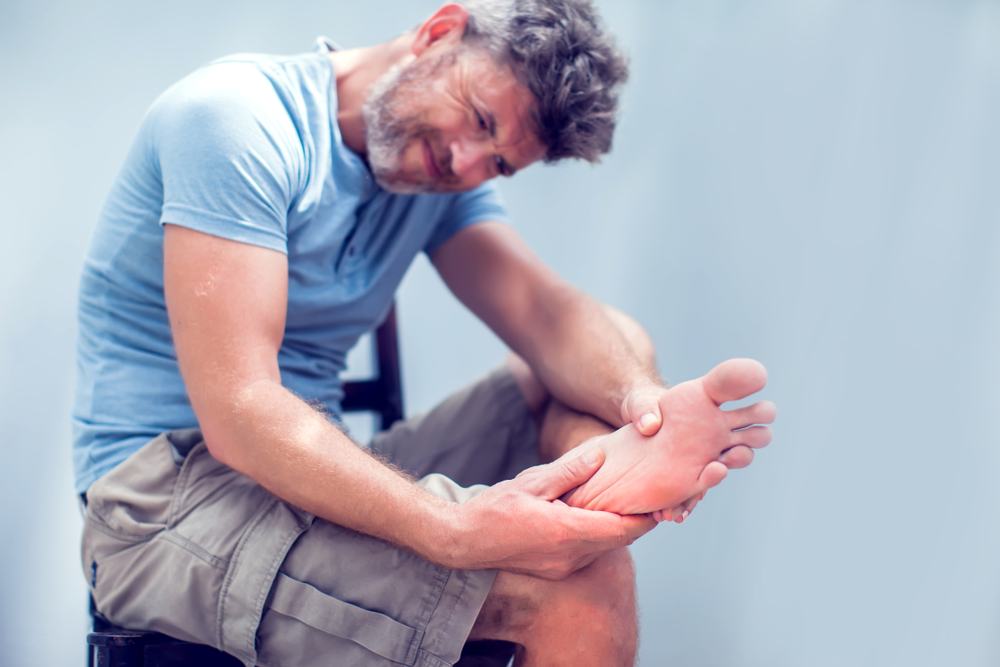Essential Strategies for Alleviating Foot Discomfort and Preventing Chronic Foot Pain
This comprehensive article explores effective strategies for managing foot discomfort, preventing chronic pain, and maintaining healthy feet. Covering topics from proper footwear and weight management to injury prevention and medical consultation, it offers valuable insights to improve foot health and mobility. Regular care routines and early intervention are emphasized as key to avoiding long-term problems and ensuring comfortable, pain-free walking and standing experiences.

Comprehensive Guide to Managing Foot Discomfort and Promoting Foot Health
Foot discomfort and chronic foot pain can significantly disrupt daily activities, reduce mobility, and diminish overall quality of life. Since our feet bear the entire weight of the body and facilitate movement, they are constantly subjected to stress, wear, and tear. Over time, these factors can lead to various foot-related issues, including pain, deformities, and injuries, which can become persistent if not properly managed. Understanding the anatomy of the foot, common causes of discomfort, and effective preventive measures are crucial steps toward maintaining healthy feet and avoiding long-term problems.
The human foot is a complex structure composed of 26 bones, over 30 joints, multiple ligaments, tendons, muscles, and a network of nerves. This intricate design allows for flexibility, balance, and support, but also makes the feet vulnerable to various issues stemming from poor footwear, injury, or degenerative conditions. Foot discomfort can manifest as aching, swelling, numbness, or sharp pains, sometimes spreading to the ankle or lower leg. Addressing foot pain requires not only symptomatic relief but also understanding its root causes to implement effective preventative and treatment strategies.
One of the most common contributors to foot discomfort is improper footwear. Shoes that do not fit well, lack proper arch support, or are overly tight can cause pressure points and deformities such as bunions, corns, and calluses. High heels are particularly notorious for shifting weight onto front foot areas and exacerbating conditions like plantar fasciitis or metatarsalgia. Therefore, choosing appropriate footwear—comfortable, supportive, and suited for specific activities—is critical in preventing foot problems.
Weight management is another vital factor in foot health. Excess body weight increases pressure on the foot joints and tissues, accelerating wear and tear over time. Maintaining a healthy weight through a balanced diet and regular exercise reduces strain on the feet, lowers the risk of obesity-related foot issues, and improves overall mobility and well-being.
Deformities and structural abnormalities, such as flat feet, high arches, or hammertoes, can contribute to localized pain and gait disturbances. These conditions often require specific treatments, including orthotic devices, physical therapy, or even surgical intervention in severe cases. Early diagnosis and targeted management can significantly improve comfort and function.
Joint conditions like arthritis, gout, and tendinitis are also common culprits of chronic foot pain. These ailments can cause inflammation, stiffness, and swelling, impairing normal movement. Addressing these issues involves a combination of medication, lifestyle adjustments, and in some cases, surgical procedures. Consulting a specialist such as a podiatrist or orthopedist is essential for accurate diagnosis and personalized treatment plan.
Injury prevention is key to maintaining foot health. Falls, overuse, or sports injuries like sprains, fractures, and tendinitis can leave lasting damage if not managed properly. Proper warm-up exercises, wearing suitable footwear during physical activity, and avoiding overexertion can help prevent injuries. If an injury occurs, prompt medical attention is necessary to prevent complications and facilitate quick recovery.
Neglecting foot health can lead to serious issues. Symptoms like persistent swelling, numbness, weakness, difficulty standing or walking, or sharp pains indicate the need for professional medical assessment. A comprehensive foot exam can identify underlying problems early, enabling timely interventions that can prevent worsening conditions.
Regular foot care routines are essential. Stretching exercises such as toe curls, ankle rotations, and calf stretches improve flexibility and strengthen foot muscles. Maintaining good hygiene, moisturizing skin, and trimming nails properly also prevent infections and skin conditions like fungal infections or ingrown toenails.
In addition, lifestyle modifications can significantly impact foot health. Wearing orthotic insoles or custom foot supports can correct biomechanical issues. Using ice packs to reduce inflammation, applying heat therapy for muscle relaxation, and elevating feet to decrease swelling are simple yet effective methods for managing mild discomfort.
When foot pain persists, intensifies, or is accompanied by other symptoms such as numbness or weakness, consulting healthcare professionals is crucial. Podiatrists and orthopedic specialists can perform detailed assessments, imaging studies, and develop tailored treatment plans. In some cases, advanced interventions or surgical procedures may be necessary to restore function and alleviate pain.
In summary, proactive foot care, proper footwear selection, weight management, injury prevention, and early medical consultation form the cornerstone of effective foot discomfort management. Understanding the foot’s complex anatomy and common issues allows individuals to adopt preventive measures, seek timely treatment, and enjoy pain-free mobility, ultimately enhancing their overall health and quality of life.





